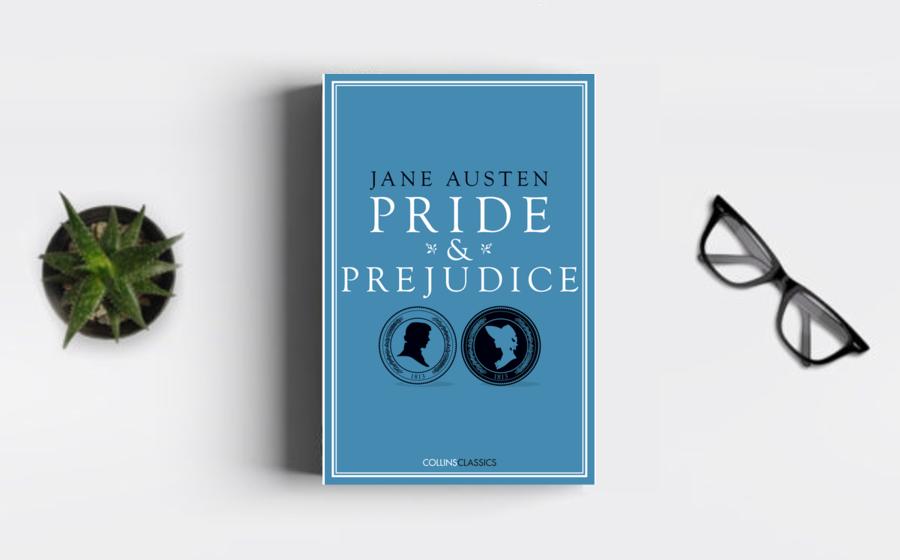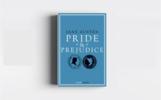"Pride and Prejudice," the quintessential work of
Jane Austen, stands as a masterpiece in the realm of
classic literature and rightfully earns its esteemed
place among the Top 10 Books of all time. It is both a pleasure and an
honor to unravel the layers of narrative brilliance,
social commentary, and timeless elegance that define
this enduring classic.
Jane Austen invites
readers into the refined world of Regency England, where
societal norms, class distinctions, and the intricate
dance of manners shape the lives of her characters. The
novel is set against the backdrop of the landed gentry,
where marriage is not just a personal choice but a
strategic move that influences social standing and
financial security.
Austen's ability to capture
the nuances of this society with acerbic wit and astute
observation remains unparalleled. The novel's opening
line, "It is a truth universally acknowledged, that a
single man in possession of a good fortune, must be in
want of a wife," sets the tone for the social
intricacies that unfold, marking the beginning of a
narrative that transcends time.
At the heart of
"Pride and Prejudice" are the iconic characters of
Elizabeth Bennet and Mr. Darcy, whose complex
relationship forms the core of the narrative. Elizabeth,
the second eldest daughter in the Bennet family, is
portrayed as intelligent, spirited, and possessing a
keen sense of individuality that defies the societal
expectations placed upon women of her time.
Mr.
Darcy, on the other hand, is introduced as the wealthy
and reserved gentleman, marked initially by his pride
and social aloofness. The tension between Elizabeth's
spirited independence and Darcy's seemingly aloof
demeanor creates a dynamic that transcends the
conventional tropes of romantic fiction.
Austen's
characterization is nothing short of brilliant, as she
crafts characters with depth and subtlety. Elizabeth's
wit, intelligence, and the gradual unraveling of her
prejudices against Darcy make her a timeless heroine.
Darcy's evolution from a proud and reserved aristocrat
to a man humbled by love and self-awareness is a
testament to Austen's skill in character development.
"Pride and Prejudice" is not merely a love story but
a profound exploration of the social fabric of its time.
Austen uses the intricate dance of courtship and
marriage to dissect the societal expectations placed
upon individuals, particularly women. The novel presents
a keen commentary on the economic and social pressures
that govern matrimonial choices.
The array of
characters, from the comically absurd Mr. Collins to the
conniving Lady Catherine de Bourgh, serves as a canvas
on which Austen paints a satirical portrait of the
societal norms that dictate the characters' lives. The
constraints of class, the pursuit of advantageous
matches, and the limitations imposed on women become a
lens through which readers can examine not only the
Regency era but also reflect on enduring social
constructs.
Elizabeth Bennet's refusal of Mr.
Collins's proposal, a man she finds insufferable,
becomes an act of defiance against societal
expectations. Austen, with her sharp pen, challenges the
notion that marriage is solely an economic transaction
and asserts the importance of personal happiness and
compatibility.
Jane Austen's signature style is
marked by satire and irony, elements that infuse "Pride
and Prejudice" with a delightful and incisive humor. The
novel navigates the absurdities of social conventions
with a keen eye, presenting a cast of characters whose
foibles and vanities are laid bare.
The character
of Mrs. Bennet, with her obsessive preoccupation with
marrying off her daughters, becomes a source of comic
relief. Mr. Collins's obsequious and pompous nature,
coupled with his absurd proposals, adds a layer of
satire to the narrative. Through these characters,
Austen invites readers to laugh at the follies of
society while simultaneously pondering the deeper social
commentary embedded in the narrative.
The use of
irony is particularly evident in the title itself,
"Pride and Prejudice." The novel explores the
consequences of these two vices, with Darcy's pride and
Elizabeth's initial prejudice against him serving as
catalysts for the unfolding drama. Austen's adept use of
irony elevates the narrative beyond mere romantic
fiction, making it a rich tapestry of social critique
and human folly.
Austen's mastery of dialogue is
a distinctive feature that contributes to the novel's
enduring charm. The characters' conversations are not
just exchanges of words but intricate dances laden with
subtext, where meaning is often concealed beneath the
veneer of social decorum.
The verbal sparring between Elizabeth
and Darcy, particularly during their first encounters,
becomes a captivating interplay of wit and tension.
Austen's dialogue serves as a mirror reflecting the
complexities of human interaction and the art of
communication in a society bound by rigid etiquette.
The novel's famed ballroom scenes, where characters
engage in verbal duels and social maneuvering, showcase
Austen's ability to use dialogue not just as a means of
conveying information but as a tool to reveal character
motivations and societal dynamics.
At the heart
of "Pride and Prejudice" lies a romance that transcends
the confines of a typical love story. Elizabeth and
Darcy's relationship is not merely a narrative arc but a
vehicle through which Austen explores themes of personal
growth, self-awareness, and the dismantling of societal
prejudices.
The
evolution of their relationship is marked by
misunderstandings, misjudgments, and the gradual
recognition of each other's true worth. Elizabeth's
initial prejudice against Darcy and his prideful
demeanor serve as obstacles that must be overcome for
their love to flourish. Austen's portrayal of love as a
force that challenges societal norms and personal biases
adds depth to the narrative.
Darcy's
transformation from a seemingly unapproachable
aristocrat to a man humbled by love becomes a narrative
journey that transcends the romantic genre. Elizabeth,
with her intelligence and spirited nature, becomes a
catalyst for Darcy's self-reflection and growth. Their
union becomes a symbol of breaking free from societal
expectations and choosing a partner based on mutual
respect and genuine connection.
One of the
defining qualities that secure "Pride and Prejudice" a
place among the Top 10 Books of all time is its
timelessness. Despite being set in a specific historical
period, the novel's exploration of human nature,
societal expectations, and the complexities of
relationships resonates across cultures and centuries.
The themes of love, pride, and societal critique are
universal, making the novel accessible to readers of
diverse backgrounds. Austen's keen understanding of the
human condition and her ability to distill the essence
of human emotions ensure that the novel's appeal
endures, transcending the constraints of time and
societal evolution.
"Pride and Prejudice" has not
only endured in its literary form but has also inspired
numerous adaptations across various mediums. From film
and television to stage productions, the novel's
narrative has found new life in different artistic
expressions.
Notable adaptations, including the
1995 BBC television series and the 2005 film adaptation
starring Keira Knightley, have introduced Austen's
timeless tale to new generations. The enduring
popularity of these adaptations is a testament to the
novel's ability to captivate audiences regardless of the
medium.
"Pride and Prejudice" is a literary gem that has
stood the test of time, enchanting readers with its
wit, social critique, and timeless romance. Jane
Austen's narrative prowess, evident in her keen
observations of society and the complexities of
human relationships, cements the novel's place among
the Top 10 Books of all time.






